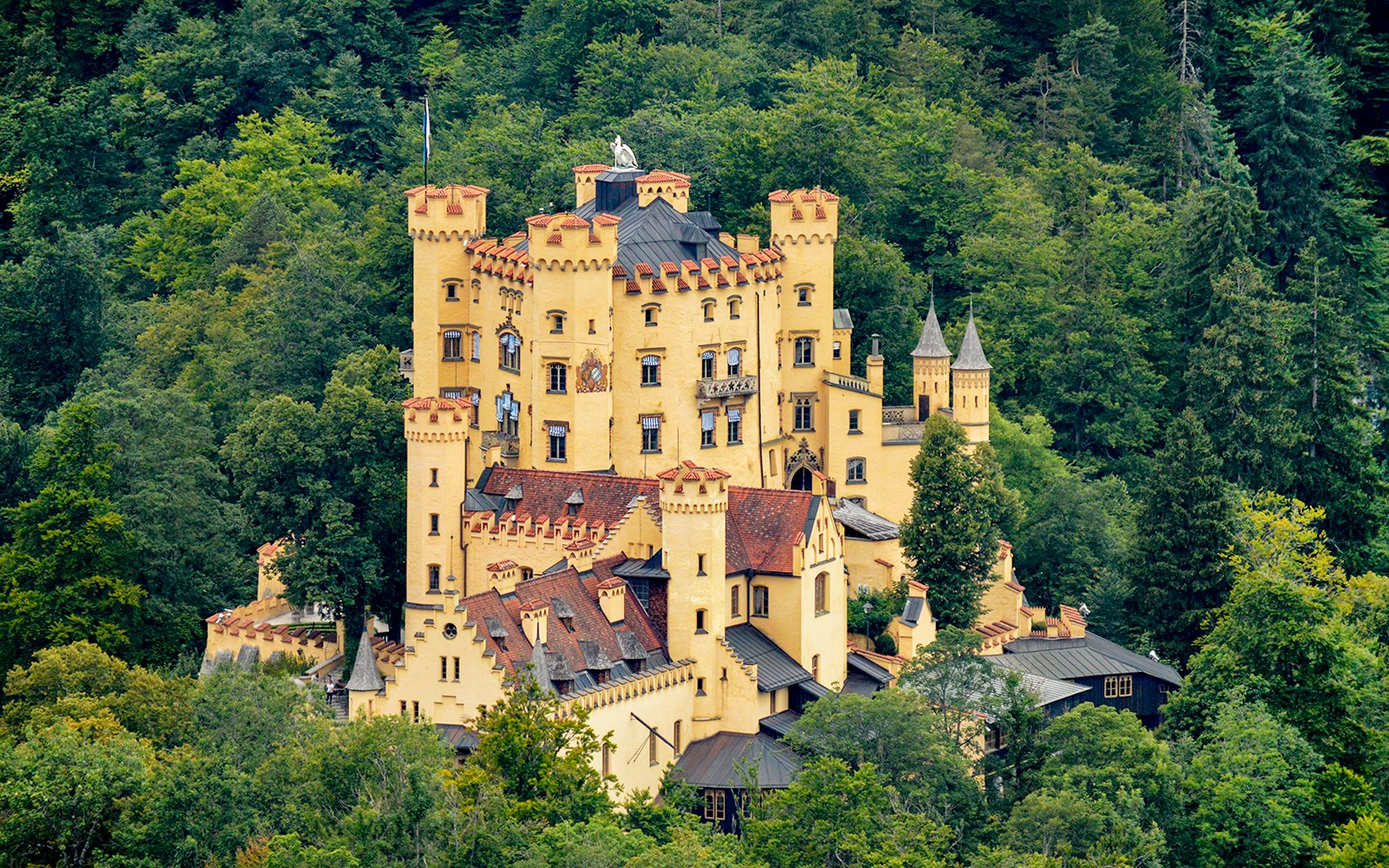- Royal roots: Hohenschwangau Castle was built as a summer retreat for King Maximilian II, King Ludwig II's father. The younger Ludwig spent much of his childhood here and the castle shaped his fascination with medieval legends and knights, a theme central to another of his famous palaces, the Neuschwanstein Castle.
- Gothic grandeur: The castle boasts stunning Gothic architecture, characterized by pointed arches, ribbed vaulted ceilings, stained glass windows, and intricate stonework. This style, emphasizing the interplay of light and shadow, evokes a sense of grandeur and mysticism, perfectly suited for a Romantic fairytale castle.
- Alpine paradise: The castle is nestled amidst the stunning Bavarian Alps, offering expansive views of the emerald green waters of the Alpsee Lake and the dramatic peaks beyond. The region's peaceful ambiance provides a perfect escape from the hustle and bustle of everyday life.
- A fairytale castle: With vibrant frescoes, depicting scenes from myths and legends, opulent furnishings, and a dramatic Alpine setting, perched above the Alpsee Lake, visiting the Hohenschwangau Castle feels like stepping into a real-life fairytale.
- Perfect for a day trip: Hohenschwangau is just a short walk from Neuschwanstein Castle, making it easy to visit both castles in one day. If you love history and art, we recommend you explore both these castles for a closer look at the opulence of the Bavarian royalty.
Why visit the Hohenschwangau Castle?
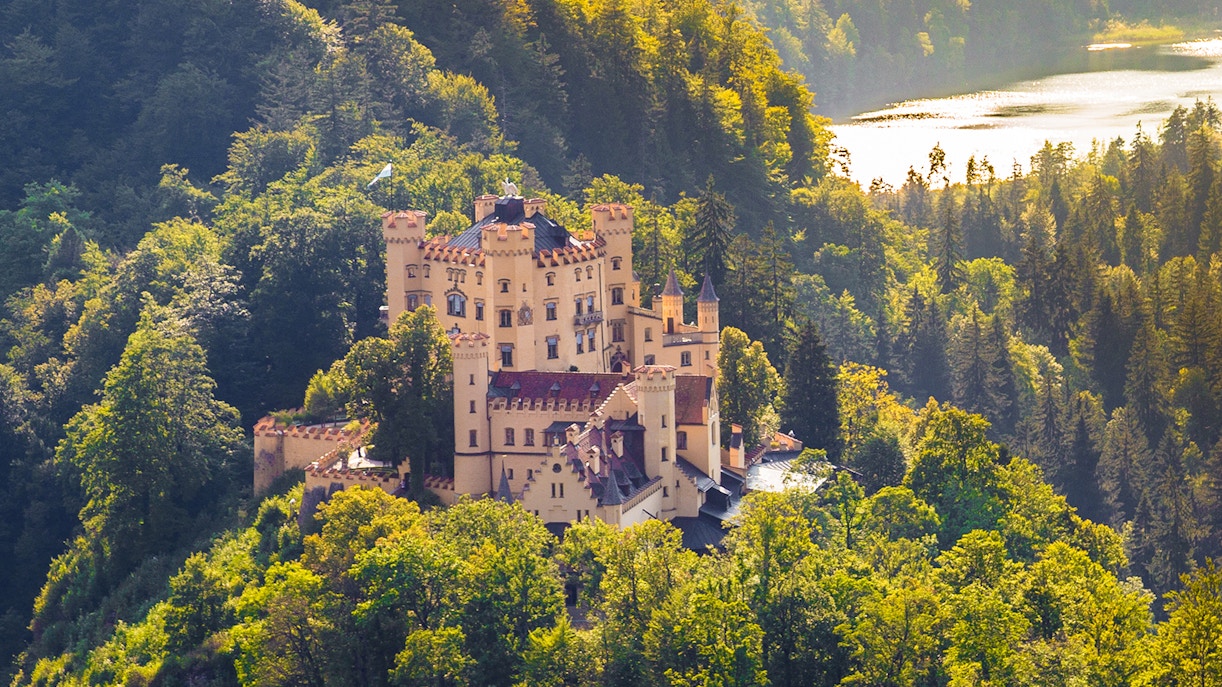
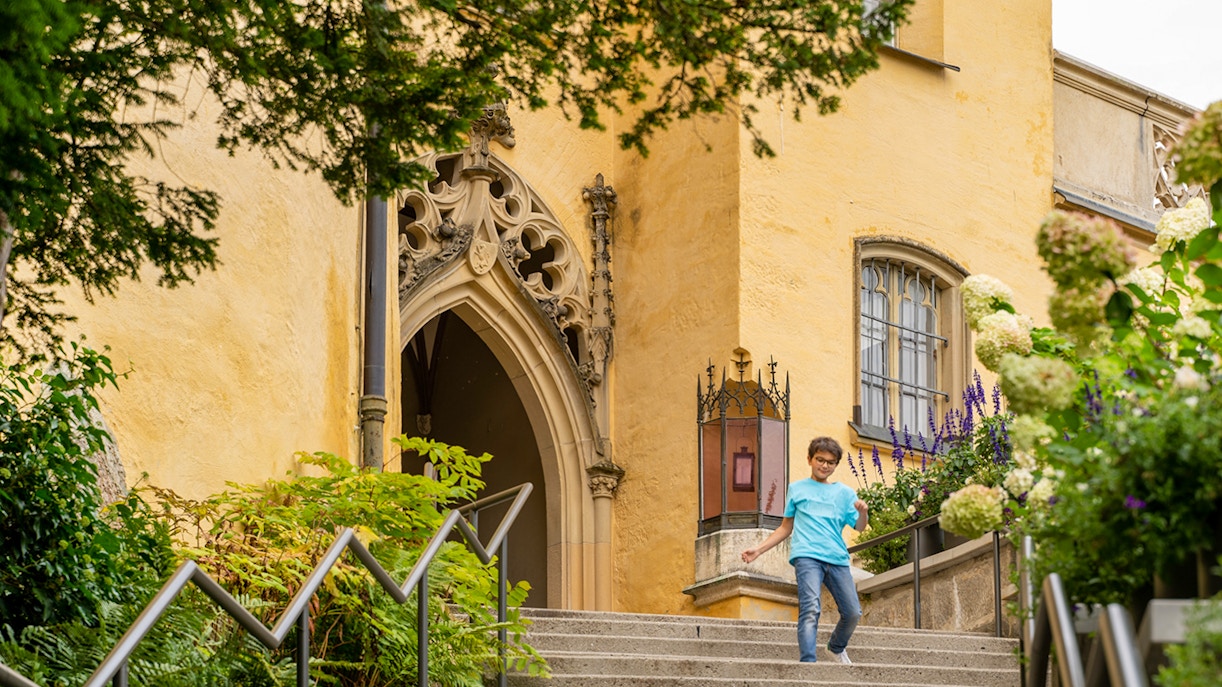
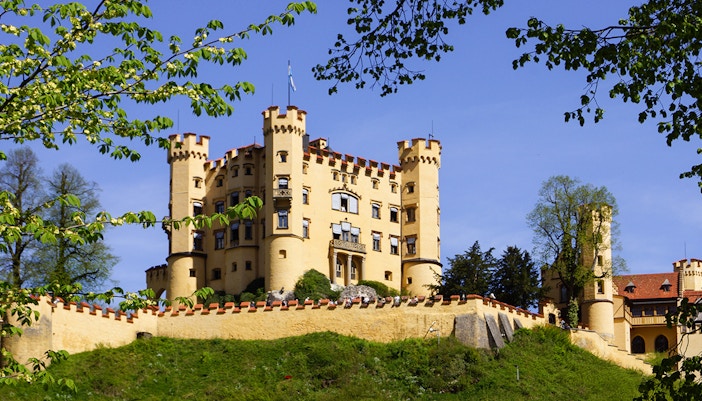
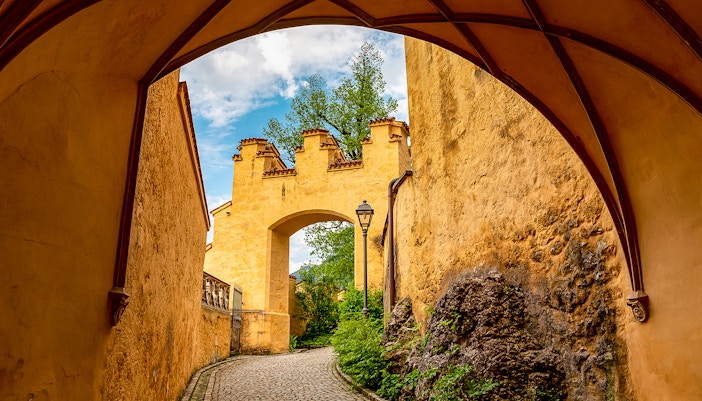
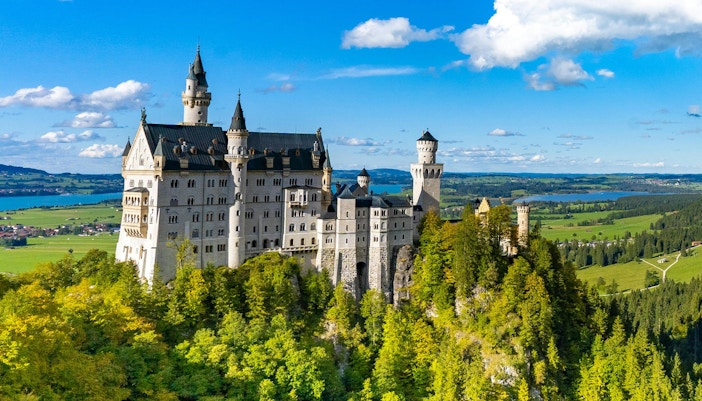
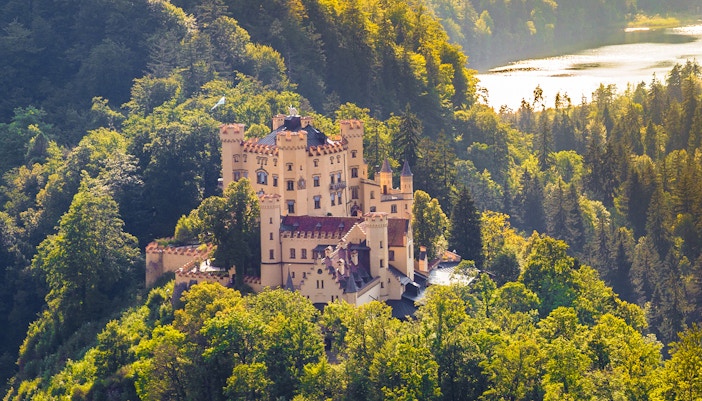
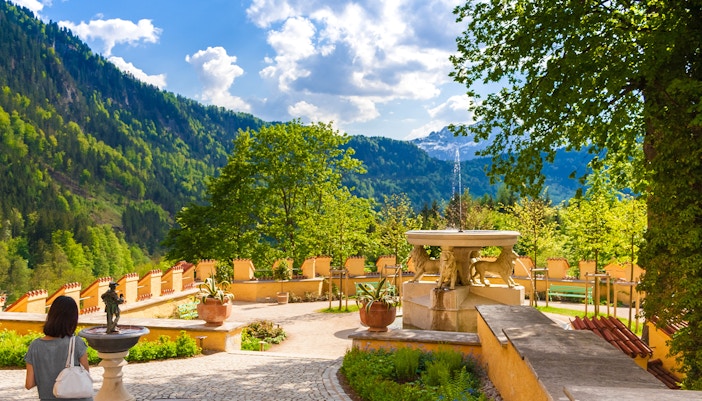
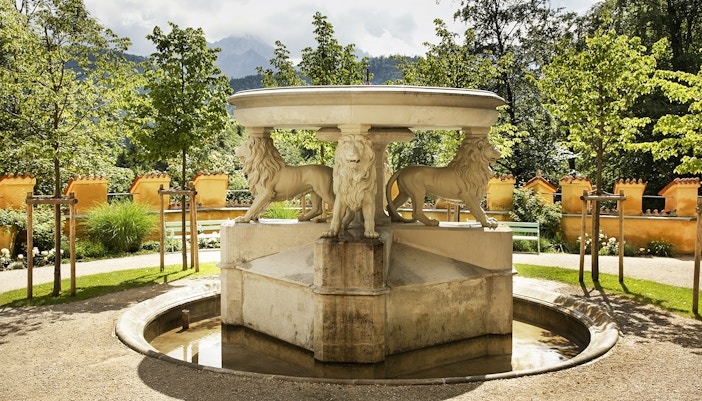
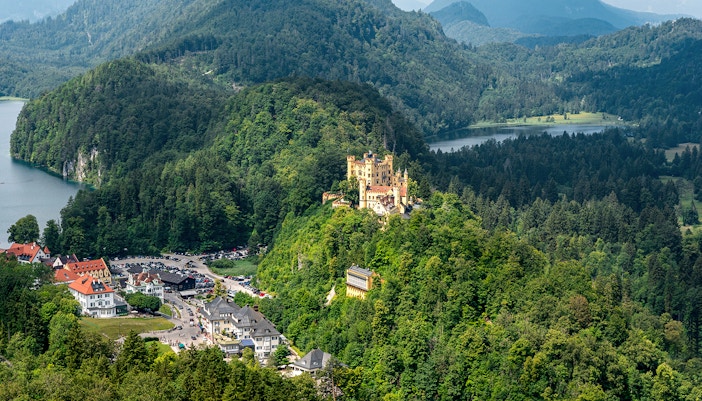
.svg?auto=format&w=156&h=48&q=90&crop=faces&fit=crop)
